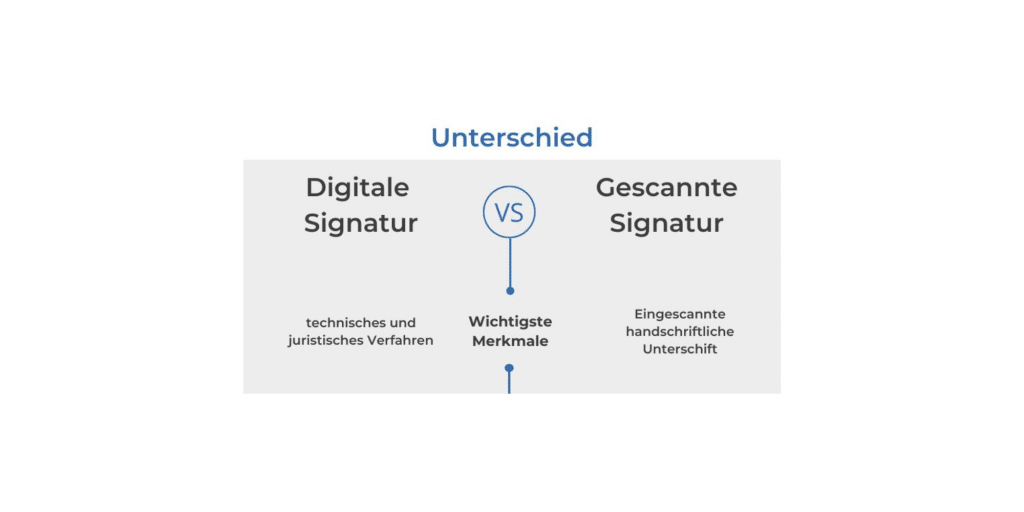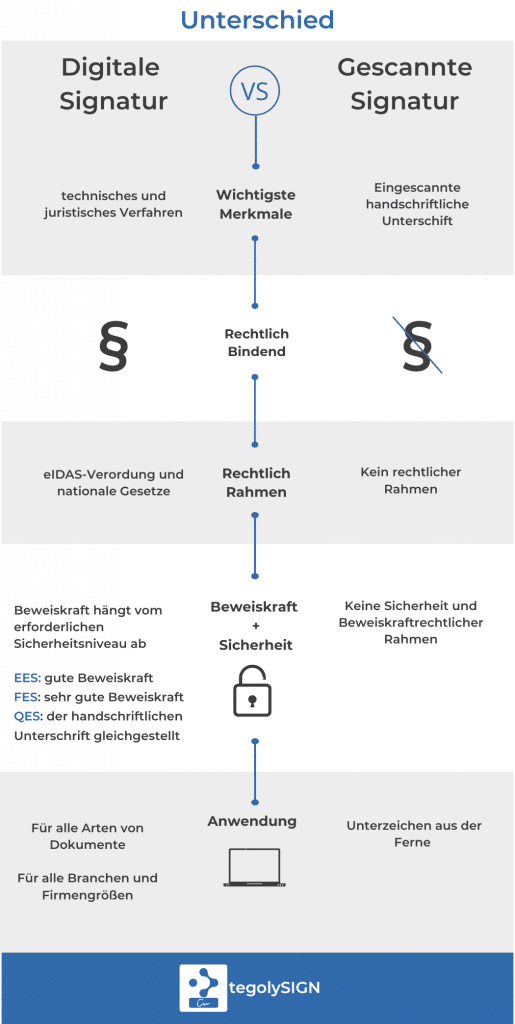
Electronic versus scanned signature: What’s the difference?
In this article, we will show you the difference between an electronic signature and a scanned signature. You will also learn how to speed up your workflow and how to sign documents quickly and legally.
The digital signature
Digital signature is a technical and legal procedure that allows people to express their consent and acceptance of documents. Electronic signatures are legally binding, as they are regulated by the European eIDAS Regulation and implemented in German law by the Trust Services Act.
This means that a signature in electronic form has validity in disputes, because it allows the following:
- Identification or authentication of the signer
- Preparation of a protocol, which is considered as a proof of signing
- Ensuring the integrity of the document and the signature
What are the levels of signatures?
Three levels of signatures are defined in the eIDAS Regulation:
- the simple electronic signature
- the advanced electronic signature
- the qualified electronic signature
They differ in their respective security levels and the “less stringent” validation steps related to the identity of the signer in the first case.
(The simple electronic signature is the most commonly used signature. It provides a sufficient level of security to sign the majority of documents).
Please read our article on the three stages of e-signature.
The scanned signature
A digitization process (or scan) digitizes a handwritten signature in a paper document and converts it into an image (.jpg, .doc, .pdf, etc.).
There are several reasons why a scanned signature is not legally valid:
- The signer cannot be identified
- It cannot be proven who signed the document or whether it was subsequently manipulated, was
How secure is the scanned signature?
For security, this means that it can be easily forged.
Anyone can digitally copy your scanned signature attached to a PDF document, for example (#SnippingTool). It is obvious that this is not legal. In court, scanned signatures therefore also have no probative value, since scanned signatures are regarded as copies and not as authentic signatures!
Therefore, it is not legally valid especially for contract processes in companies.
Reminder!
To obtain legal validity and a good level of security, the digital signature is the only valid signature.
In the infographic we summarize the most important differences

